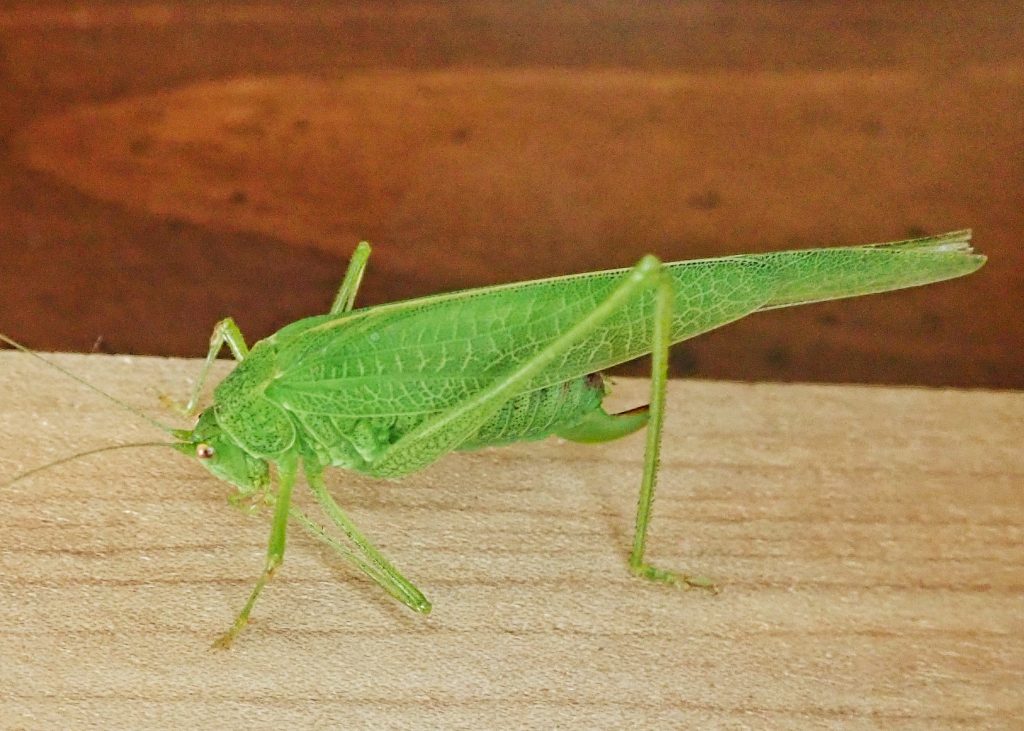
These are members of the family Tettigoniidae (katydids), a family which is superficially similar to grasshoppers but have much longer antenna that often exceed the length of the insect. They are in the subfamily Phaneropterinae (often called false katydids, sickle-bearing bush crickets or leaf katydids). Though small for a katydid, they are fairly large (this specimen is 34mm long, wings included), green bugs, with a vaguely leaf mimicking pattern of veins on their wings. Females (shown here) have a large, upturned ovipositor. The body, femora, head and pronotum have heavy, reddish black speckling, and the body is stout and roughly half the length of the wings. The hindwings extend 8-9 mm past the forewings.
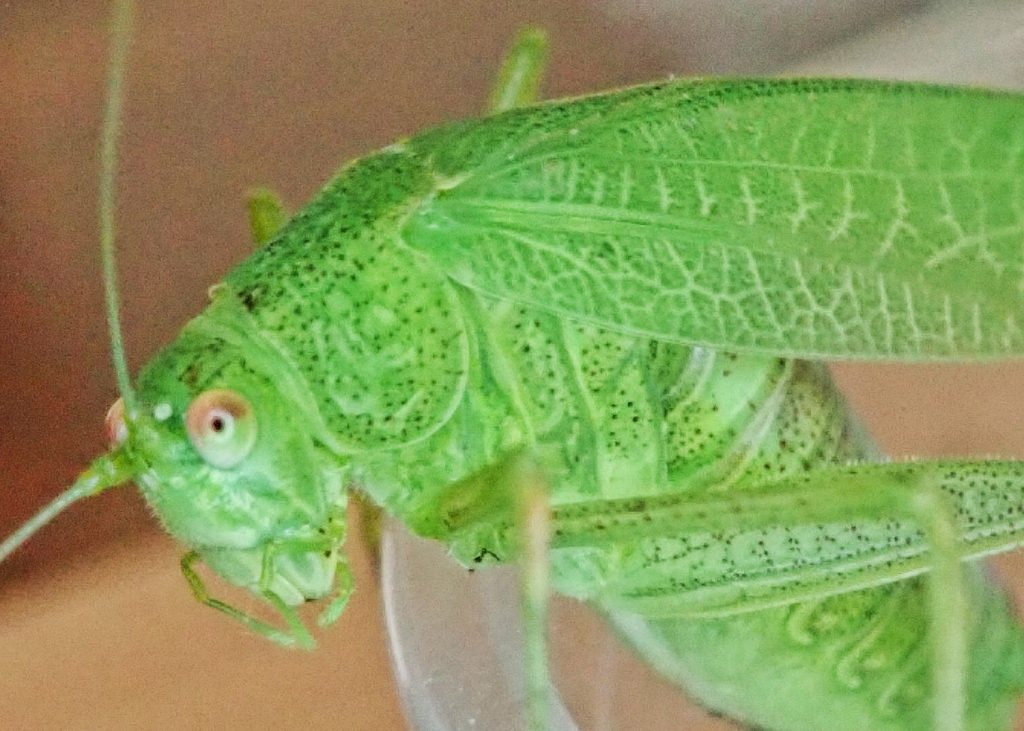
In our region the species most likely to be confused with this is Scudderia furcata (Fork-tailed Bush Katydid), but that species is larger (up to 42mm including wings), lacks the reddish black speckling, and the body is longer in proportion to the wings because the hindwings are shorter in proportion to the forewings and only extend past them 4-5mm.
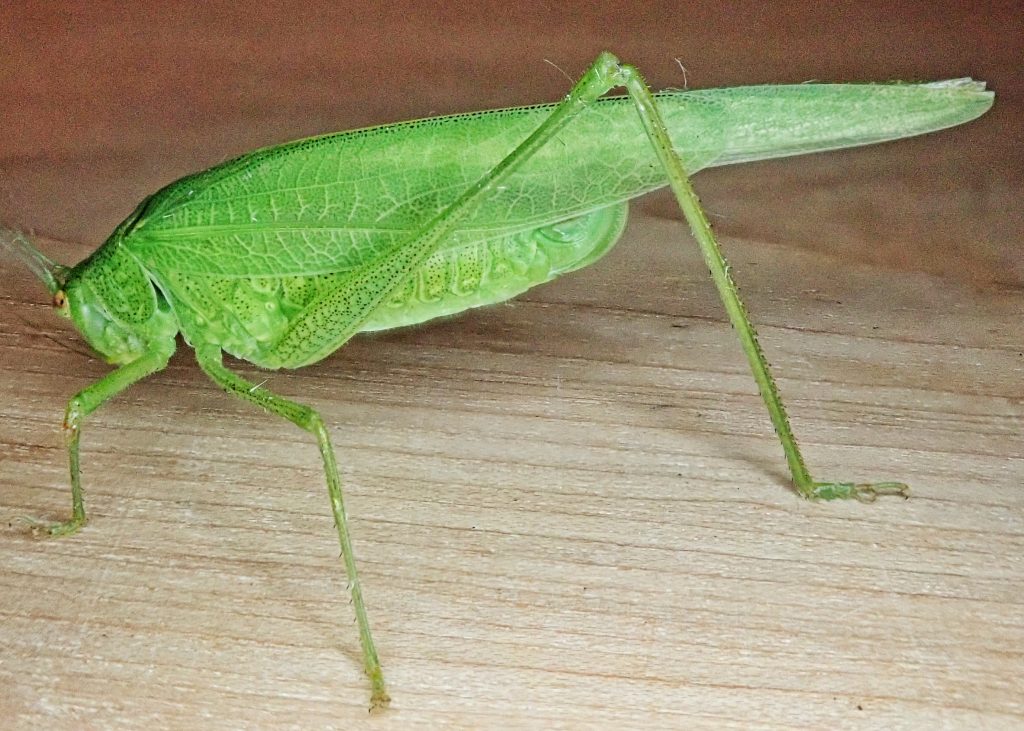
The Phaneropterids are unique amongst Orthoptera (grasshoppers, katydids and crickets) in that the females may reply to the ‘song’ of the male, forming a duet. Thus the Phaneroptera nana males move towards the females, rather than interested females moving towards the males. This allows the females to remain hidden, while the males assume the risks inherent in moving. But it has been shown in studies (Tauber, Greenfield, Cohen, Pener; 2001) that only males receiving a response within the narrow 60 millisecond window after their song ends will move towards the female.
Mediterranean Katydids lay their eggs within the leaf structure of a very wide variety of plants and shrubs. The eggs will overwinter, but also will apparently hatch throughout the year based on the presence of various nymphal stages and adults at the same time. They prefer sunny, warm habitats, often near water. This species is considered to be an invasive species and agricultural pest in California, especially in pear orchards.
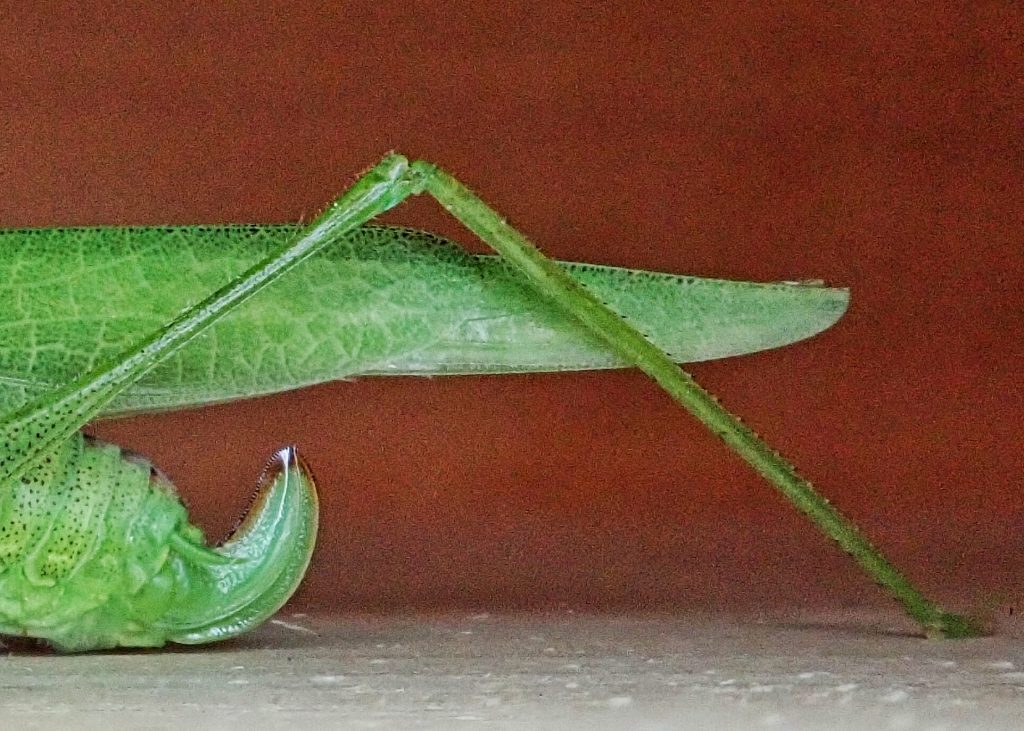
This katydid is native to North Africa, Europe, and, as the name suggests, the area around the Mediterranean Sea. It has been known from the Bay Area in California since the 1930s, but seemed confined to there. Then in 1999 it was confirmed in Los Angeles County, California, and in 2008 it was found in NYC. And now Portland, Oregon seems to be a hub for further expansion, with several records from the Portland-Vancouver metro area in the last few years. This specimen was found at Marine Park, on the outskirts of Vancouver, Washington, along the Columbia River.
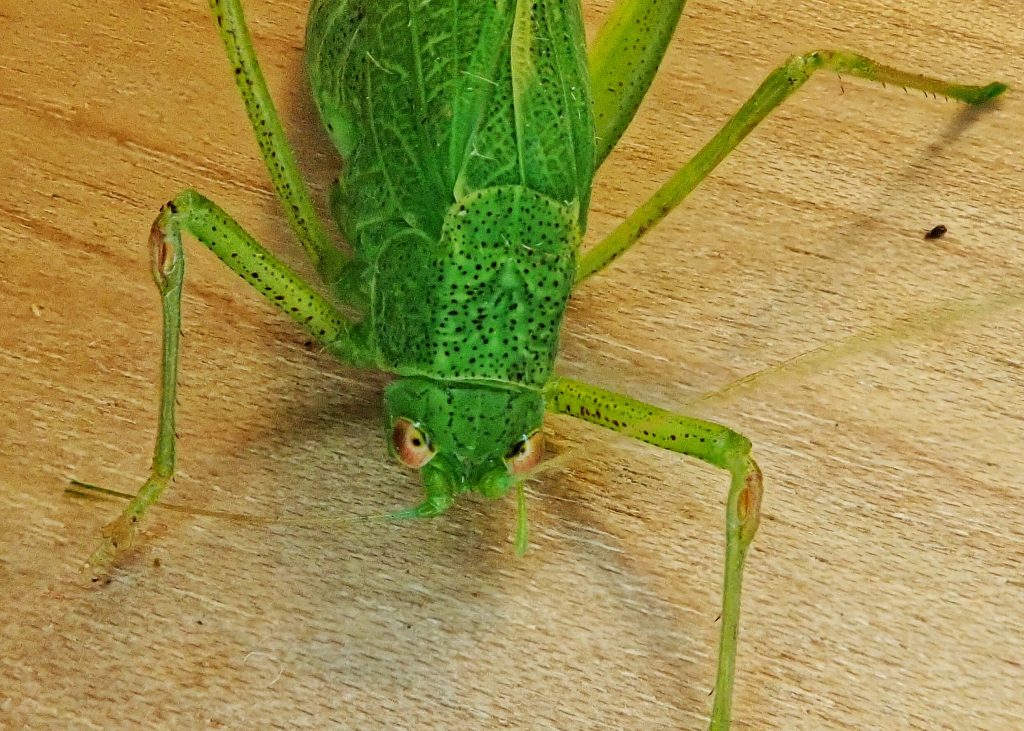
http://www.lianginsects.com/phaneroptera-nana.html
https://www2.ipm.ucanr.edu/agriculture/pear/Katydids/
European locusts and their ecology: Phaneroptera nana
http://www.orthoptera.ch/arten/item/phaneroptera-phaneroptera-nana
Size- Head to wingtip 30-36mm; body length 14-18mm
Habitat- Warm sunny locations; primarily in and near urban areas in the US
Range- Thus far, only known from the Portland Metro area in the PNW
Eats- Soft plant tissue like leaves and flowers; occasionally scavenges dead insects
Flight Season- In our region the adults seem most common in late summer.
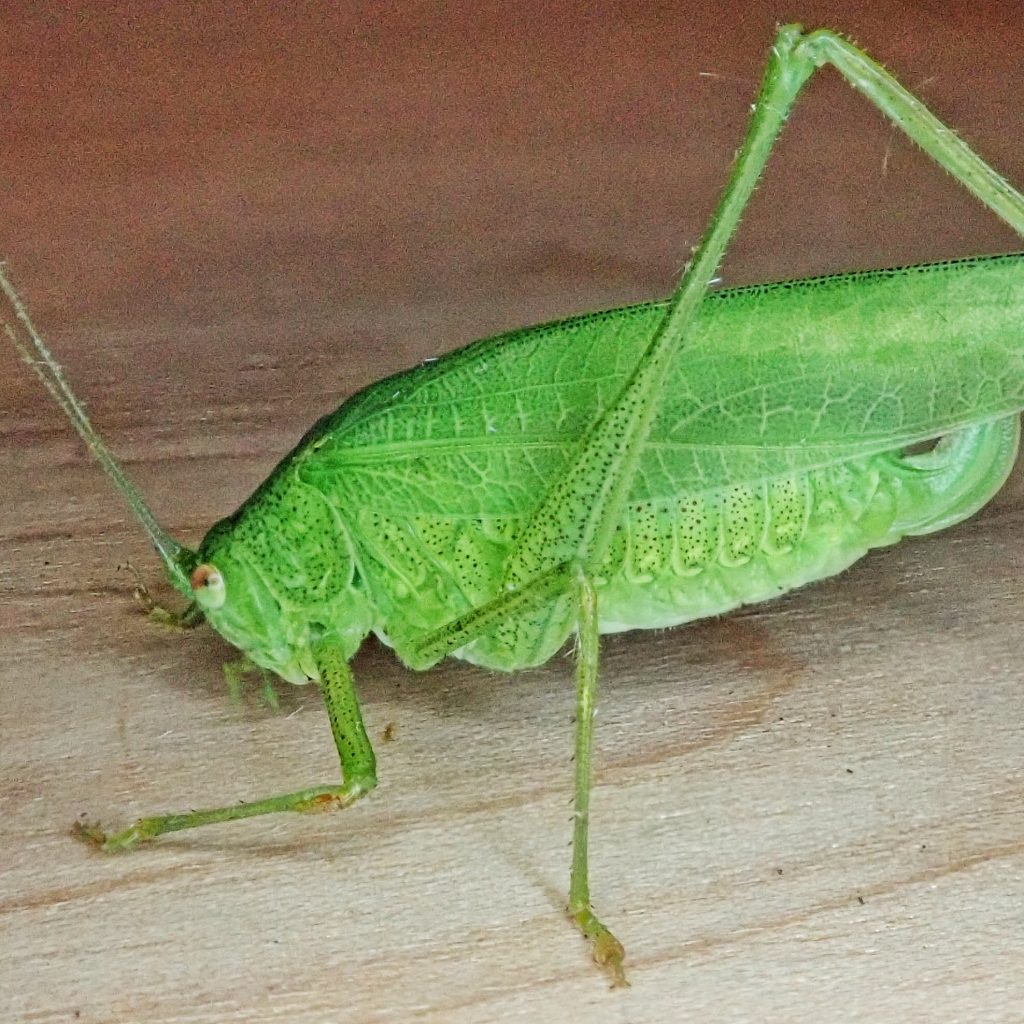
Hi – I notice it says above these are only in Portland. Seem to have a lot of something looking very similar on the East Hill of Kent (Seattle suburb). To our recollection this is the first year we have seen.
Could well be! They’ve been expanding their range. Do you have any pics? I’d love to see them. Maybe post them at BugGuide, and/or send them to me at recreationalnaturalist@10000thingsofthePNW.com.
I found this one in my backyard in Kernville,CA
ZIP IS 93238
They are getting around, Connie!
I just removed one from my house an hour north of Seattle.
So they’ve now made it that far north. Can’t say I’m surprised. Thanks for sharing that with us!
Found two of these on our roses in SW Portland (8/17/24).
I have one on my black bbq cover this morning (8/31/24) in far southwest Portland. Have a good photo if you want to see it!
Interesting, Kathleen! I’m hearing about a lot of them. Saw one myself this morning😀
Do you know whether this species of katydids are a problem for the Northwest natural environments and/or gardens?
As far as I know they are only problematic for commercial agriculture.
Hi! Found one in Aloha, Oregon this morning. About 15 miles west of Portland. They are invasive, I hate the idea of it, but should we be killing them if we find them? 🙁
Hi Alena! I doubt that killing individuals is ever going to affect the overall population of this species. If you don’t like the idea of killing them then you should not do so. Personally, I think they are a handsome and interesting bug, and I wouldn’t care to harm one.
My 3 year old and I have been looking for “crickets” this late summer as the light fades. Tonight, directly after a hunt around the block one of these presented itself in the dining room. Some “cricket”!!
Very cool, Rob! Thanks for sharing that with us!
Found in my room and back porch in Beaverton my neighbors have an Asian pear tree maybe that’s why